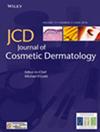摘要
导言:非手术鼻整形或鼻模型制作是美容实践中备受追捧的手术。由于透明质酸(HA)易于使用且具有可逆性,目前仍是首选产品。不过,它也有一定的风险。聚己内酯(PCL)填充剂在美容实践中大有可为。它具有公认的安全性和较长的作用时间。由于其独特的特性,它可能是未来非手术鼻部塑形的关键。 研究方法 12 名患者参与了研究。其中 10 人不愿意接受手术,也没有呼吸问题。两名是鼻整形手术后的并发症患者,他们不希望再次接受手术。根据需要在每个部位(鼻根、鼻梁和鼻尖)注射 0.2 毫升 PCL 填充剂。采用全球美学改善量表(GAIS;3 = 非常改善,2 = 明显改善,1 = 有所改善,0 = 无变化,-1 = 更差)和患者满意度量表(非常满意、满意、不满意)。GAIS 评分的总和被量化为总改善(TMI)。患者在接受治疗前和接受治疗后分别接受了 12 个月的随访,并记录在案。 结果 该研究的 GAIS 得分为 98%,所有患者在手术后和 12 个月后都对治疗非常满意。 结论 PCL 填充物可能是非手术鼻部塑形取得长期持续效果的方法。专业的注射技术以及对副作用的了解和处理是必不可少的。

Introduction
Nonsurgical rhinoplasty or rhinomodelation is a sought-after procedure in aesthetic practice. The current product of choice remains hyaluronic acid (HA) because of its ease of use and reversibility. However, it does carry some risks. Polycaprolactone (PCL) fillers hold a lot of promise in aesthetic practice. It has an established safety profile and a longer duration of action. Because of its unique properties, it may hold the key to the future of nonsurgical rhinomodelation.
Methods
Twelve patients were enrolled in the study. Ten out of these were not willing to ask for surgery and had no breathing problems. Two were post-surgical rhinoplasty complications who did not want another surgery. 0.2 mL of PCL filler was injected at each site according to the need (radix, spine, and or tip). The Global Aesthetic Improvement Scale (GAIS; 3 = very much improved, 2 = considerably improved, 1 = improved, 0 = no change, and −1 = worse) was used along with a patient satisfaction scale (highly satisfied, satisfied, dissatisfied) were used. The sum of the GAIS ratings was quantified as total improvement (TMI). The patients were followed up for 12 months before and 12 months after procedures were taken and documented.
Results
The GAIS score was 98% for the study and all patients were highly satisfied with their treatment right after procedure and 12 months later.
Conclusion
PCL fillers may be the way forward for long-term sustained results in nonsurgical rhinomodelation. Expert injection techniques and knowing the side effects and handling them is mandatory.

 求助内容:
求助内容: 应助结果提醒方式:
应助结果提醒方式:


